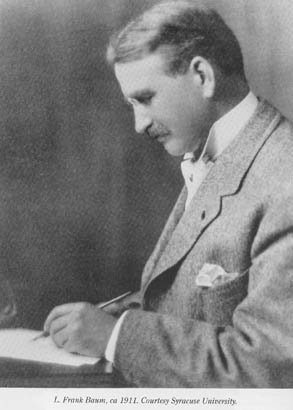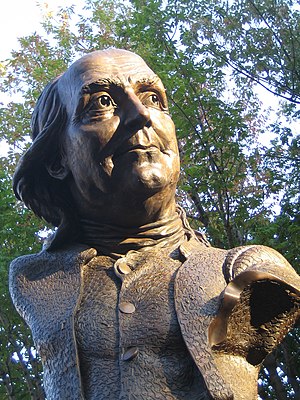 Image via Wikipedia
Image via WikipediaTao of Leadership,
Lao Tzu's
Tao Te Ching Adapted for a New Age
by John Heider 1985, Paperback, 6th printing, 1990.
I mentioned in a previous post,
4 Paradoxes for Principals from Tao of Leadership (#14inFeb), that I would follow up the 4 Paradoxes for Principals with a discussion of the five themes from the book that jump out at me. To be fair, I will not discuss themes at this point. Instead, I will present to you the Five Qualities of A Principal that Heider and I would like to see in every principal's office. This is different from chapter 67. Three Leadership Qualities; please read on for a brief discussion of that chapter.
Note: Throughout this piece, I am including Heider's "chapter" numbers and the page numbers. Each chapter is actually only a single page of adaptation. When I quote the text, I frequently quote multiple excerpts from the same page and separate them with quotation marks. Interspersed is also my commentary clearly designated.
Before I get to the Five Qualities of A Principal, I want to share four excerpts from the book that I find poignant, but were neither paradoxes nor single qualities.
"12. Time for Reflection" "When group members have time to reflect, they can see more clearly what is what is essential in themselves and there." (p. 23)
Those few of you who knew me way back in my ETEP days will de shocked to learn that I now value personal reflection (I was so sick of being asked to reflect that I put a mirror into my final portfolio - did not go over well). The time for reflection, especially in a group of people, is hard to come by and not everyone is interested. However, I agree with Heider that reflection allows us to see what is essential.
"39. The Source of Power" "Since all creation is a whole, separateness is an illusion. Like it or not, we are team players. Power comes through cooperation, independence through service, and a greater self through selflessness." (p. 77)
Every principal knows that we are only as good as the team around us. That team includes the teachers, the assistants, the secretaries, the custodians, and the kitchen staff. If you don't believe me, try to get through the day when the kitchen is short staffed - I have my own apron for just such occasions.
There are still so many teachers who believe the opposite of this passage - just leave me alone and let me teach. What prevents some teachers from seeing the value in an open door policy is beyond the scope of this post. Any thoughts?
“67. Three Leadership Qualities” “These three qualities are invaluable to the leader: *Compassion for all creatures *Material simplicity or frugality *A sense of equality or modesty” (p. 133)
In some ways this covers it all: discipline, budget, personnel, group dynamics. Really, though, this passage equates being a good leader with being a good person. I like that.
“68. Opportunities” “Good leadership consists of motivating people to their highest levels by offering them opportunities, not obligations. That is how things happen naturally. Life is an opportunity and not an obligation.” (p. 135)
This fits so well with what we've read in Dan Pink's Drive. Opportunities, not obligations, are similar to giving people autonomy to their best work.
While reading Tao of Leadership, I highlighted a number of passages that are most relevant to educators. Not surprisingly, there are a few leadership qualities that emerged rather quickly. Some of the passages apply to more than one theme so I just picked one. Please argue with my choices in the comments. Taken together, the following leadership qualities describe a wonderful principal.
Silent/Listening, Non-intervening, Humble, Flexible/Yielding, Conscious/Aware
Silent/Listening
I found it difficult at first and then enlightening to just sit quietly in some committee meetings. Gradually, teachers learned that I wanted to avoid shaping the discussion just by speaking. While that sounds conceited, the reality is that even professional educators will sometimes say what they think the principal wants to hear. If we listen first, more ideas will theirs. I also practice silence when talking with an angry parent. I will let a parent rant and rave for about ten minutes if needed before I begin to shape the conversation.
"5. Equal Treatment" "The light of awareness shines equally on what is pleasant and on what is not pleasant." "Silence is a great source of strength." (p. 9)
"23. Be still" "The leader teaches more through being than through doing, the quality of one's silence conveys more than long speeches." (p. 45)
"28. A Warrior, a Healer, and Tao" "The leader who knows when to listen, when to act and when to withdraw can work effectively with nearly anyone, even with other professionals, group leaders, or therapists, perhaps the most difficult and sophisticated group members. Because the leader is clear, his work is delicate and does not violate anybody's sensibilities." (p. 55)
Non-intervening
There are many ways this plays out for a principal as you can see by the variety of quotes I've included. I find that the chapter called Polarities mentions what may be most important to me as a leader. I have learned, the hard way, that once I hand an assignment over to a staff member, I have to be prepared to accept the outcome. If I do not get what I want, it means that I wasn't clear about the work. Other times, this has played out differently. I once had two staff members come tell me that we should form a behavior code for the school. They recruited staff members to steve on a volunteer committee. I decided not to attend the first several meetings. When they finally called me to see what they had accomplished, I was thrilled. While there were some parts of their work that I would have done differently, the only place that I asked for changes related to state law. The result was that they could present the code to the rest of the staff, not as the principal's ideas, but as their ideas.
"2. Polarities." "Any over-determined behavior produces its opposite:" "The leader knows that constant interventions will block the group's process. The leader does not insist that things come out a certain way." (p. 3)
"17. Being a Midwife" "The wise leader does not intervene unnecessarily. The leader's presence is felt, but often te group runs itself." (p. 33)
"43. Gentle Interventions" "Gentle interventions, if they are clear, overcome rigid resistances. If gentleness fails, try yielding or stepping back altogether. When the leader yields, resistances relax. Generally speaking, the leader's consciousness sheds more light on what is happening than any number of interventions or explanations. Few leaders realize how much how little will do." (p. 85)
"45. Appearing Foolish" "Perhaps it looks as if the leader is only sitting there and has no idea of what to do. But it is just this lack of needless intervention that permits the group to grow and be fertile." (p. 89)
"57. Doing Less and Being More" "The fewer the rules the better. Rules reduce freedom and responsibility. Enforcement of rules is coercive and manipulative, which diminishes spontaneity and absorbs group energy." "When the leader practices silence, the group remains focused." "Good leadership consists of doing less and being more." (p. 113)
"60. Don't Stir Things Up" "Run the group delicately, as if you were cooking small fish. As much as possible, allow the group process to emerge naturally. Resist any temptation to instigate issues or elicit emotions which have not appeared on their own." (p. 119)
"64. The Beginning, the Middle, And the End" "Many leaders spoil the work just as it nears completion. They get eager. They get invested in certain outcomes. They become anxious and make mistakes. This is a time for care and consciousness. Don't do too much. Don’t be too helpful. Don’t worry about getting credit for having done something.“ (p. 127)
Humble
Humility is not highly valued in our culture these days. I guess that is why real humility is such a powerful leadership skill. (The very fact that I think someone is interested in reading what I have to say is proof that I am not as humble as I could be.)
"9. A Good Group" "The leader does not take all the credit for what happens and has no need for fame. A moderate ego demonstrates wisdom." (p. 17)
"10. Unbiased Leadership" "Learn to lead in a nourishing manner. Learn to lead without being possessive. Learn to be helpful without taking credit. Learn to lead without coercion." (p. 19)
“66. Low and Open” “What we call leadership consists mainly of knowing how to follow. The wise leader stays in the background and facilitates other people’s process.” “Group members genuinely appreciate a leader who facilitates their lives rather than promoting some personal agenda. Because the leader is open, any issue can be raised. Because the leader has no position to defend and shows no favoritism, no one feels slighted; no one wishes to quarrel.” (p. 131)
“71. All the Answers” “The wise leader has learned how painful it is to fake knowledge. Being wise and not wanting the pain, the leader does not indulge in pretending. Anyway, it is a relief to be able to say: ‘I don’t know.’” (p. 141)
“75. Without Greed” “The group will not prosper if the leader grabs the lion’s share of the credit for the good work that has been done. The group will rebel and resist if the leader relies on strict controls in an effort to make things come out a certain way. The group members will become deadened and unresponsive if the leader is critical and harsh.” (p. 149)
“81. The Reward” “The wise leader is not collecting a string of successes. The leader is helping others to find their own success. There is plenty to go around. Sharing success with others is very successful.” (p. 161)
Flexible/Yielding
This is not a natural way to act for so many. We are taught to take things head on, tackle issues, act. Chapter 74, see below, is especially interesting in the era of test scores finding their way into teacher and principal evaluations. Do they think that punishing is going to improve learning?
"8. Water" "Consider the leader: the leader works in any setting without complaint, with any person on the floor; the leader acts so that all will benefit and serves well regardless of the rate of pay; the leader speaks simply and honestly and intervenes in order to shed light and create harmony." "Like water, the leader is yielding. Because the leader does not push, the group does not resent or resist." (p. 15)
"63. Encounters" "If you are attacked or criticized, react in a away that will shed light on the event. This is a matter of being centered and of knowing that an encounter is a dance and not a threat to your ego or existence. Tell the truth." (p. 125)
“74. Judge and Jury” “It is not the leader’s role to play judge and jury, to punish people for ‘bad’ behavior. In the first place, punishment does not effectively control behavior. But even if punishment did work, what leader would dare use fear as a teaching method? The wise leader knows that there are natural consequences for every act. The task is to shed light on these natural consequences, not to attack the behavior itself. If the leader tries to take the place of nature and act as judge and jury, the best you can expect is a crude imitation of a very subtle process. At the very least, the leader will discover that the instrument of justice cuts both ways. Punishing others is punishing work.” (p. 147)
Conscious/Aware
I wrote last June about taking the pulse of the school,
What Are Your Vital Signs. I addition to meeting with people to hear about what is going on, walking through the school is best way to become conscious of what is going on. Some call it management by walking around. Most principals will admit they do knot get out of their office enough. Listening, walking around, asking questions, do what it takes to be aware of the people in your school.
"14. Knowing What is Happening" "When you do not understand what a person is saying, do not grasp for every word. Give up your efforts. Become silent inside and listen with your deepest self." "Listen quietly rather than listening hard." "So attend to what is happening now." (p. 27)
"20. Traditional Wisdom" "The highly educated leader tends to respond in terms of one theoretical model or another. It is better simply to respond directly to what is happening here and now." (p. 39)
"38. Potent Leadership" "Leaders who lose touch with what is happening cannot act spontaneously, so they try to do what they think is right. If that fails, the often try coercion. But the wise leader who loses the sense of immediacy becomes quiet and lets all effort go until a sense of clarity and consciousness returns." (p. 75)
"47. Here and Now" "By staying present and aware of what is happening, the leader can do less yet achieve more." (p. 93)
"56. The Leader's Integrity" "The wise leader knows that the true nature of events cannot be captured in words. So why pretend? Confusing jargon is one sure sign of a leader who does not know how things happen." "The leader's integrity is not idealistic. It rests on a pragmatic knowledge of how things work." (p. 111)
If you have not read the Tao of Leadership, please do. I have barely scratched the surface. In fact, I was remiss in my initial post not to link to a previous
Connected Principals post by
Mark Hardeman post and a scribd document of the
Ripple Effect posted by
David Truss.
Please share your thoughts in the comments.
Cross-posted to Connected Principals























